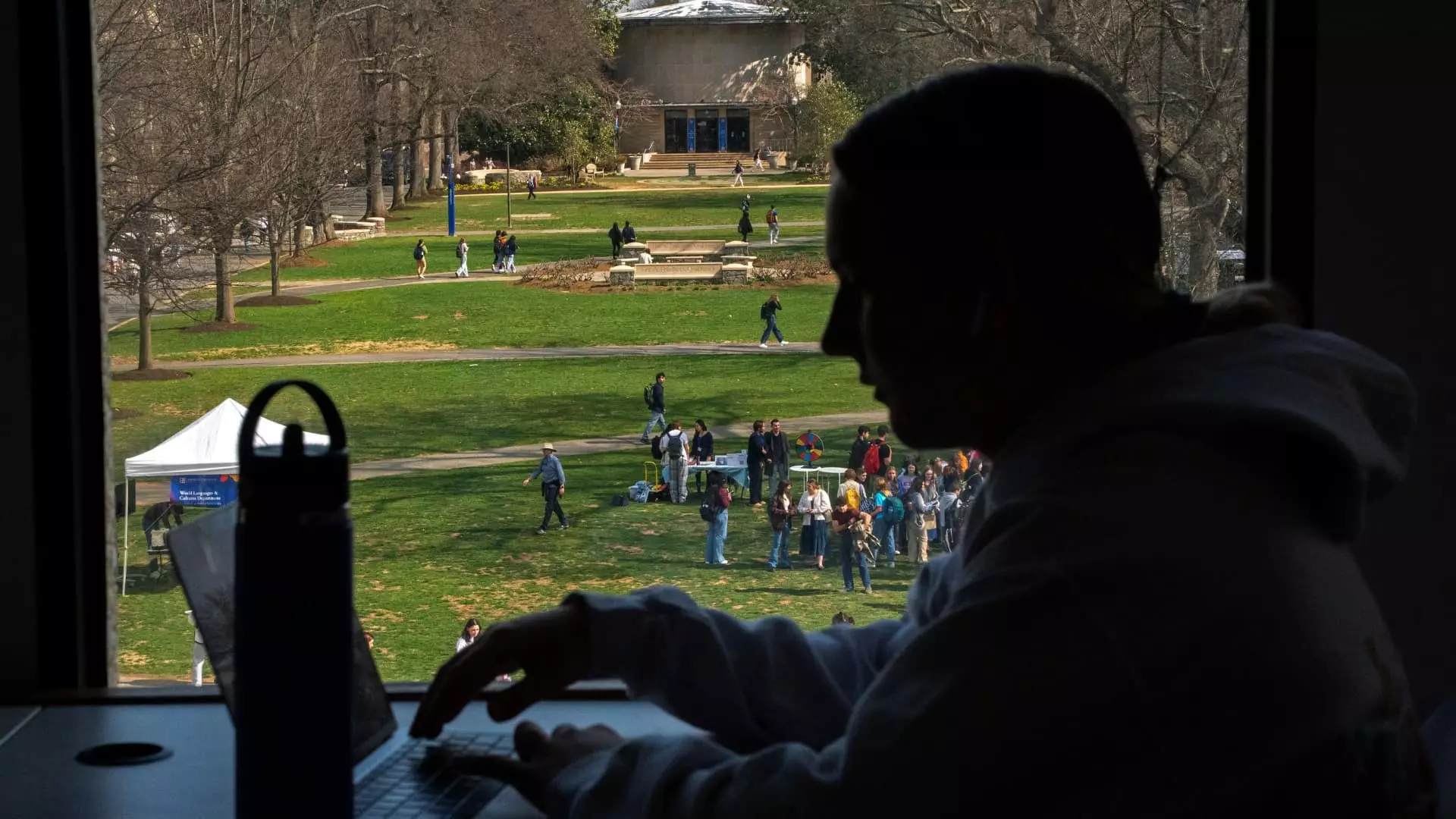The current landscape of student loan borrowing presents a looming crisis that has many experts sounding alarms. Recently, the Federal Reserve Bank of New York projected that over 9 million student loan borrowers may face significant declines in their credit scores come 2025. This projection is not merely a casual correlation; it highlights systemic problems within our financing and educational systems that warrant serious scrutiny. The implications are dire: borrowers may see their scores plummet by as much as 171 points—an alarming statistic that exists within a system designed to assist, not handicap, the next generation.
The journey of a student loan borrower is fraught with precariousness, and this new revelation casts a dark shadow over those who already struggle with mounting debt. Credit scores, which have become a barometer of financial health, may soon reflect the toll of this impending crisis, particularly striking those with previously strong scores. For a borrower with a high credit rating, the consequences of delinquency will be especially punishing; for many in this demographic, a dip in score could mean the closure of doors that once seemed wide open.
Behind the Numbers: Why Are We Here?
One must consider the broader context that has led to this impending crisis. For years, student loan borrowers have been sheltered from the adverse consequences of delinquency due to pandemic-related relief measures. Those protections officially expired toward the end of September 2024, leaving borrowers scrambling to understand their financial standings amidst an avalanche of payments. The ensuing financial chaos is not just a fleeting nightmare; it is a culmination of years of inadequate policy response to an education funding crisis that has ballooned out of control.
While some might dismiss these fears, suggesting that borrowers should have prepared, it is essential to recognize the systemic issues that contribute to these hardships. Many individuals did what society instructed them to do—pursue higher education to secure a better future. Yet the mechanisms to support that ambition have faltered, leaving behind a trail of financial ruin for those unable to keep up with the rising costs of education.
Navigating Potential Dead Ends
Amidst the concerns surrounding credit scores, solutions exist, although they require a proactive approach that many borrowers might feel ill-equipped to undertake. Income-driven repayment plans offer a beacon of hope for those grappling with insurmountable payments. By tying monthly bills to discretionary income, these options allow some borrowers to find relief—possibly even reducing their monthly payments to a mere zero dollars. However, this doesn’t negate the fact that such relief should not be viewed as a permanent solution to the systemic failures of our education financing structures.
Additionally, options such as deferments and forbearances serve as temporary reprieves. They can keep borrowers from being categorized as late, but they also propagate the cycle of debt, potentially leading to further problems down the line. While deferral pauses payments, the underlying issues—rising interest rates and an inability to escape the cycle of borrowing—remain unresolved. Thus, the very relief options designed to support borrowers may unintentionally contribute to a prolonged crisis.
The Burden of Transparency and Awareness
As the specter of credit penalties looms, the importance of actively monitoring one’s credit report cannot be overstated. Borrowers must self-advocate in an environment where they are often marginalized and pushed to the sidelines. Checking credit ratings regularly is a first step toward not only understanding but managing one’s financial snapshot. However, why must it fall on the shoulders of individual borrowers to navigate such a convoluted system? The reality is troubling; as lenders pull back from offering support to borrowers who find themselves in a precarious situation, the burden becomes unsustainable.
The idea of rehabilitating debt or consolidating loans, while helpful, typically requires borrowers to navigate a bureaucratic labyrinth—a process fraught with confusion and, in many cases, misinformation. Until systemic changes to alleviate these pressures manifest, borrowers may feel stuck in a cycle that is not solely of their making, exacerbating an already strained financial landscape.
By recognizing our collective responsibility as a society to address these challenges, we foster a more equitable future for students and borrowers alike. The crisis is not merely a statistic; it speaks to societal failures in supporting individuals who sought education as a pathway to progress. The concerns surrounding student loan delinquencies demand a radical rethink of how we fund and manage educational opportunities in our rapidly changing world. The time for reform is now.

